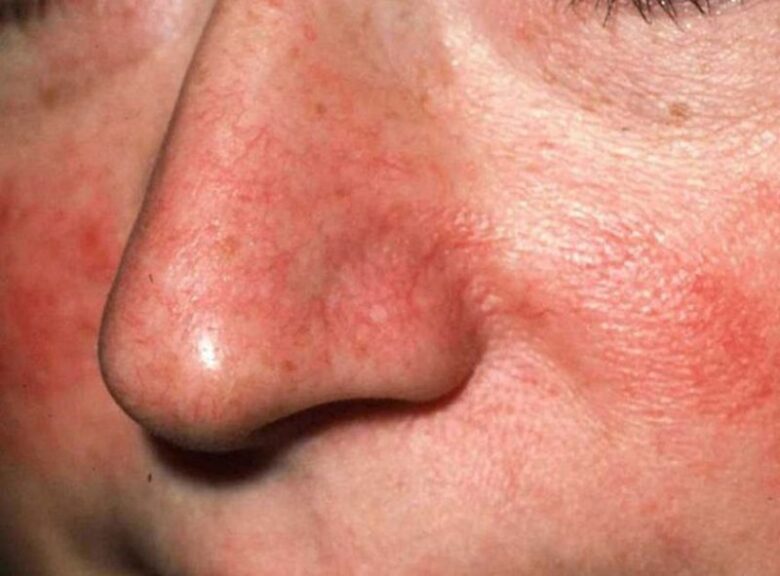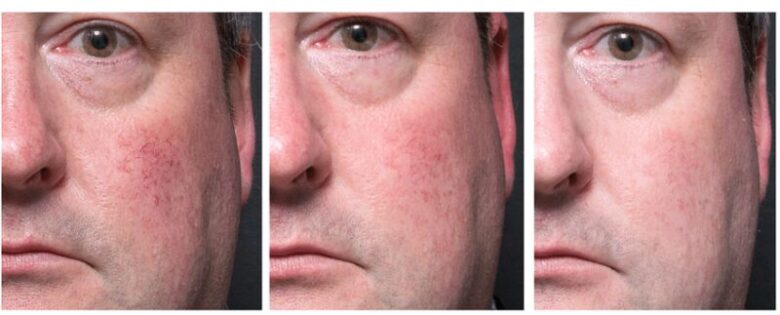It’s estimated that rosacea impacts millions of people worldwide. This inflammatory skin condition leads to blotchy and red patches on the skin. These patches are often made up of small, red bumps and broken capillaries. They can often be confused for rashes from a distance, but they definitely not a rash.
Rosacea is a skin condition that is progressive when it is left untreated. It can be expected to worsen over time if it is not treated. The skin on your face can become redder, feel rough to the touch, pore may become enlarged and more pimple-like bumps can appear.
The good news for men who are struggling with rosacea, there are a number of treatment options that can halt the progression of the condition and restore an even-toned complexion.
The basics of rosacea

Rosacea doesn’t pose a risk to your health, but can take a toll on your levels of confidence. According to the skincare professionals at ManCaveSydney, the exact cause of rosacea is not yet fully known, but medical researchers believe that there may be some hereditary and environmental factors that contribute to the condition; there is some thought that it’s a vascular disorder.
There are some triggers for the condition, which can be avoided in effort to minimize the redness. While women are more prone to having the condition, it is also seen quite often in men who have fair skin and who may have a family history of the condition.
Some of the potential triggers could include the following

- Spicy foods
- Hot drinks like coffee and tea
- Alcohol
- Temperature extremes
- Exposure to wind and sunlight
- Overly emotional situations and heavy exercises
- Some medications, including those to treat high blood pressure
- Cosmetics, particularly if you’re sensitive to some of the ingredients used
Prescription-strength creams are often used to help ease the rosacea breakouts, but perhaps the most effective method of reducing the redness from the condition is to use laser treatments.
How laser therapy can help

Depending on your individual needs, many patients respond well to a combination of prescription medications and laser treatments. Your skin will need to be carefully evaluated during your consultation in order to determine the best type of treatment to meet your needs.
Laser therapy can help to boost your body’s healing response, while also helping to clear up the areas of redness across your face. Laser therapy can be used to target the redness, thickened skin and recurring areas of visible blood vessels that are commonly seen in those who have rosacea.
The lasers generate heat that is then used to collapse the visible blood vessels that are across the face of those with rosacea. This is a non-invasive and largely painless method of treating the symptoms of rosacea. Most patients see very good results from treatment and also see a dramatic improvement in skin texture.
While more than one treatment may be needed, laser therapy results can last for as long as five years.
Frequently seen side-effects of laser treatment

While this is a non-invasive procedure, there is still the potential to see some side-effects from the procedure itself. Perhaps the most commonly seen side-effect is an increase in redness on your face or nose. This redness will typically fade within one to two weeks.
Other commonly seen side-effects may include the following.
- Itching
- Redness
- Feeling of tightness across your face
These side-effects should pass within a week of treatment.
Laser therapy is an effective tool for treating rosacea. While there is no cure for the condition, patients will appreciate the way that they look and feel for up to five years after treatment is concluded.


